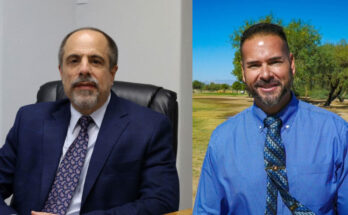Contributed Article/Courtesy City of Safford
SAFFORD — A recent article was written regarding the City of Safford’s decision to terminate the Intergovernmental Agreement between the City of Safford and the Town of Thatcher. Decisions of this nature are not easy to make or done lightly. Having and cultivating relationships with our neighbors is a high priority for the City of Safford and the Safford City Council. However, such agreements must always be made in a manner that ensures that they are mutually and proportionately beneficial to the citizens of our respective communities.
City of Safford staff and Council have been reviewing several Intergovernmental Agreements (IGAs) that the City is currently involved in. In reviewing those agreements, the City Council and staff have identified that some of the agreements require updated language, have areas where they can be improved to better meet the needs of the current environment, or, in some cases, have simply been forgotten. The City uses the common practice of using intergovernmental agreements to define cooperative arrangements with other governmental entities.
The golf course IGA was one of the agreements the City had been reviewing and was attempting to discuss updates to, given the current needs at the Mount Graham Golf Course. For example, one of the main provisions regarding the City of Safford’s operational cash subsidies expired in 2019. And yet, the City has continued to cover all operating deficits annually, many exceeding the $200,000 subsidy limit codified in the IGA. The City was not required to go beyond three years or exceed a subsidy of $200,000, but it did so in the interest of service delivery to the Gila Valley community. On average, the City of Safford also pumps 150 million gallons of effluent on the golf course every year, with an approximate value of $450,000 to $500,000. The effluent is processed at the City of Safford wastewater treatment facility, whose operations, maintenance, and capital costs are entirely funded by City of Safford residents.
Considering the above numbers in light of the $60,000 of in-kind utilities and the $25,000 in sales tax remitted by Thatcher annually, and discussed in the article, the numbers are dwarfed relative to what the City of Safford is covering. Additionally, the City of Safford receives minimal assistance on capital projects for golf course infrastructure, so the imbalance is even greater. Capital costs concern Troon, the current golf course management company that the City of Safford pays to oversee the golf course’s daily operations.
Recently, at a meeting regarding a much-needed update to the golf course sprinkler system at a golf course quarterly meeting with Thatcher staff, Safford staff, and Troon, the golf course management company, the response from Thatcher staff was – “good luck with that.”
Troon has provided clear direction regarding its current priorities. In addition to the sprinkler system, they have discussed the need for new golf cart barns (built in 1956 and falling apart) and the development of facilities that would allow for social gatherings such as weddings. This would enable Troon to generate additional revenue without ceasing normal golf course operations. There are also several recent projects budgeted or completed by the City. The City of Safford has remodeled the pro shop and bathrooms, purchased freezers and stoves (as part of an ongoing kitchen overhaul), and is fixing the restaurant’s roof.
Therefore, talking about water fountains when there is an imperative, as articulated by Troon, regarding various infrastructure needs, seems misplaced and singular in focus. Our job should be to understand the needs of the golf course, as conveyed by Troon, and find ways to meet those needs cooperatively. A sprinkler system could be costly, but it would also greatly benefit from making the course more cost-effective to manage through automation, increasing the overall golf course service level (increasing its value as an economic development/tourism asset), and increasing the potential for revenue generation opportunities. The Troon management team has articulated this many times to all concerned.
Another issue related to the golf course intergovernmental agreement (IGA) was recently identified during a review by the City of Safford’s finance staff. Sales tax remittances outlined in the agreement had not been submitted to the City since November 2021. As a result of the City’s review, approximately $124,000 in outstanding sales taxes associated with golf course operations was recovered. We’re pleased that this oversight was identified and resolved.
Ultimately, allowing the City of Safford taxpayers to pay for the vast majority of golf course activities, while allowing others to infer ownership based on relatively minimal contributions, was not something our community felt was equitable to all parties. The golf course is a unique asset for the Gila Valley. It is essential to consistently and adequately maintain the facility for all Gila Valley residents and visitors. Cooperative arrangements with our valley partners must effectively address those needs and be balanced and equitable.
About the City of Safford: Nestled in the heart of Southeastern Arizona’s Gila Valley, the City of Safford is a vibrant rural community and the largest municipality in Graham County, with a population of just over 10,000. Incorporated in 1901 and becoming a city in 1955, Safford serves as the central hub for Southeastern Arizona. The City operates many services and facilities, supported by over 230 dedicated staff members, including full-time employees, seasonal workers, volunteer firefighters, and council members. In addition to providing essential utilities such as gas, water, electricity, wastewater, and sanitation, the City of Safford operates a golf course, airport, library, and landfill that serve the broader county. Safford is committed to providing exceptional services and fostering a thriving community for all residents and visitors.








